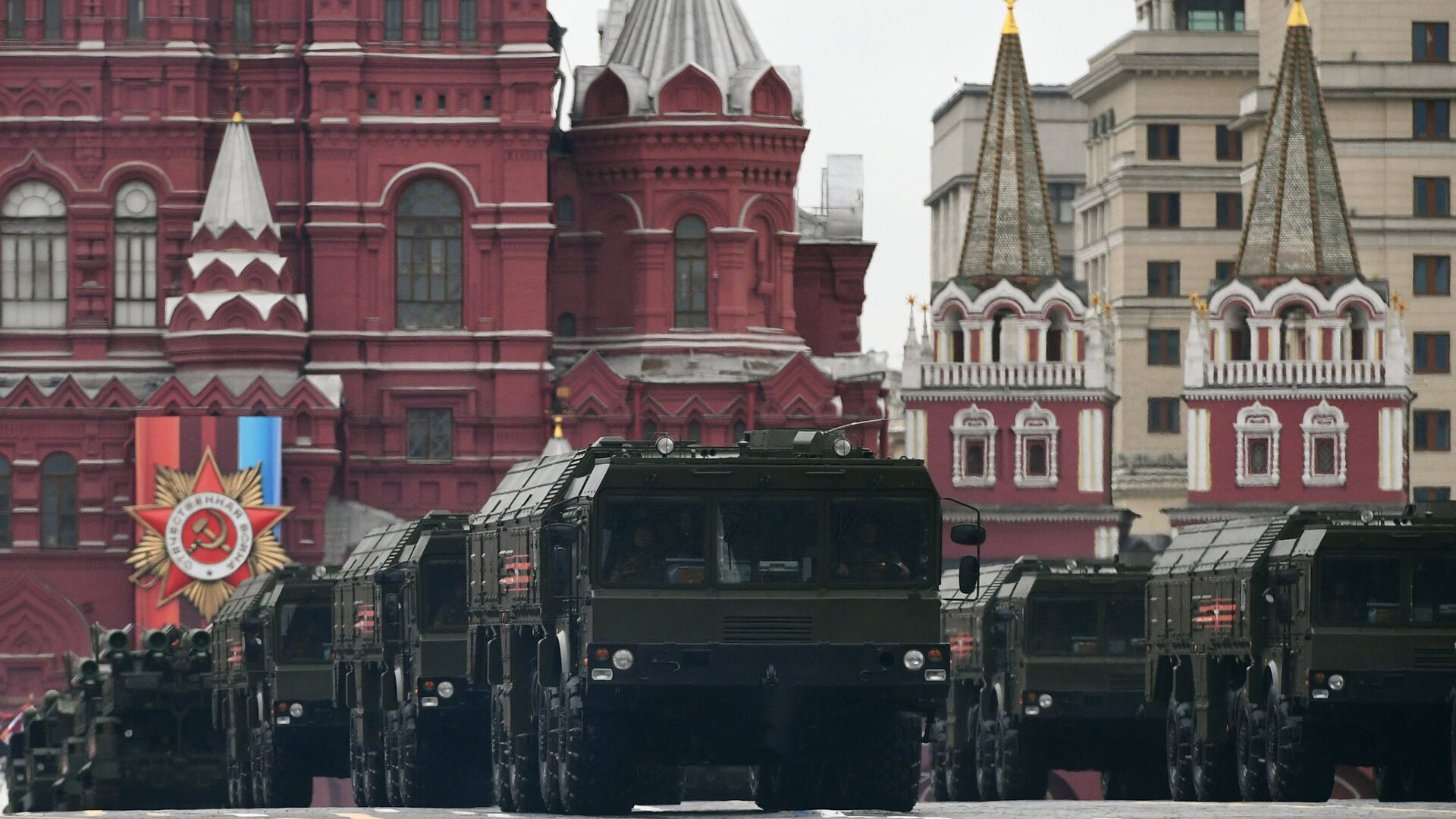https://sputnikglobe.com/20240719/russian-missiles-off-alaska-how-moscow-can-respond-to-us-short-sighted-euromissile-plans-1119434040.html
Russian Missiles Off Alaska? How Moscow Can Respond to US' Short-Sighted Euromissile Plans
Russian Missiles Off Alaska? How Moscow Can Respond to US' Short-Sighted Euromissile Plans
Sputnik International
The Russian Foreign Ministry has promised to "calibrate [its] responses" to US plans to deploy new offensive missile capabilities in Germany "without any internal constraints" in terms of what arms to place and when and where to place them to ensure Russia's security. A leading European military observer lays out the options at Russia's disposal.
2024-07-19T19:05+0000
2024-07-19T19:05+0000
2024-07-19T19:05+0000
russia
military & intelligence
moscow
germany
nato
tomahawk
analysis
https://cdn1.img.sputnikglobe.com/img/105340/96/1053409655_0:160:3073:1888_1920x0_80_0_0_42aead64d2a88da799302f5118288bce.jpg
Moscow has a wide array of options when it comes to responding to the US decision to deploy offensive Tomahawk cruise and hypersonic missiles in Germany, says Swedish Armed Forces veteran and political and military observer Mikael Valtersson.“This move by the US and Germany will of course be met by a Russian response,” Valtersson told Sputnik, saying he believes Russia could start off by deploying “new dual-use missiles in the Kaliningrad region and maybe also in Belarus.”“Other options would be to deploy new missiles in the Far East and make Alaska and maybe the western coast of the US a target for Russian [intermediate-range] missiles,” Valtersson believes. Yet another possibility includes “deploy[ing] medium-range missiles south of Europe...and near the US,” if an agreement could be reached with one or more traditional Russian allies in North Africa or the Caribbean Basin.Valtersson noted, for example, that while the ruling German Social Democratic Party and mainstream opposition Christian Democratic Union have expressed support for the US missile plans, the populist right Alternative for Germany, the populist left Sarah Wagenknecht Alliance and more liberal left Linke have expressed staunch opposition.Whatever Russia ends up doing, “a big risk” stemming from the US move, and the subsequent Russian response, will arise from the reduced flight time of intermediate-range missiles placed near one another's borders, which increases stress and tensions, and the risks of either side making a “hasty decision,” Valtersson warned.Euromissiles 2.0During the original Euromissiles crisis in the 1980s, the deployment of American Pershing II ballistic and cruise missiles in Western Europe sparked widespread, multi-million protester-strong demonstrations, and put Soviet strategic forces on hair trigger alert, nearly accidentally triggering a nuclear war.The White House formally announced plans to deploy new, longer-range Tomahawk cruise missiles, unspecified hypersonic missiles and SM-6 long-range SAM systems last week, against the backdrop of the NATO Summit in Washington.Russian Deputy Foreign Minister Sergei Ryabkov warned this week that Russia would take measures it finds necessary to respond to the threat in due course.The US weapons expected to be deployed to Germany and those developed by Russia in response were prohibited under the 1987 Intermediate-Range Nuclear Forces Treaty - an agreement that was specifically designed to lower the risks of a nuclear war in Europe. The US walked out of the agreement in 2019, and has taken a series of other highly provocative steps in the five years since, from the further expansion of NATO toward the Russian border, to the proxy war against Russia in Ukraine, and work on the Pentagon's Conventional Prompt Strike initiative - proposing massed conventional cruise and hypersonic missile strikes designed to decapitate the Russian leadership and declaw the country's nuclear potential.In 2023, the Bulletin of the Atomic Scientists shaved ten seconds off its Doomsday Clock - where midnight represents the likelihood of a world-ending calamity, to one minute and thirty seconds.
https://sputnikglobe.com/20240718/future-location-of-us-arms-in-germany-undecided-1119420473.html
https://sputnikglobe.com/20240626/germans-objection-to-ukraine-support-reflected-in-poor-electoral-results--scholz-1119128022.html
https://sputnikglobe.com/20240710/wests-actions-carry-risks-of-clash-of-nuclear-powers---russian-envoy--1119321505.html
russia
moscow
germany
Sputnik International
feedback@sputniknews.com
+74956456601
MIA „Rossiya Segodnya“
2024
News
en_EN
Sputnik International
feedback@sputniknews.com
+74956456601
MIA „Rossiya Segodnya“
Sputnik International
feedback@sputniknews.com
+74956456601
MIA „Rossiya Segodnya“
how will russia respond to us missiles in germany, are us plans to place long-range missiles in europe provocative, could us missiles in germany spark a war
how will russia respond to us missiles in germany, are us plans to place long-range missiles in europe provocative, could us missiles in germany spark a war
Russian Missiles Off Alaska? How Moscow Can Respond to US' Short-Sighted Euromissile Plans
The Russian Foreign Ministry has promised to "calibrate [its] responses" to US plans to deploy new offensive missile capabilities in Germany "without any internal constraints" in terms of what arms to place and when and where to place them to ensure Russia's security. A leading European military observer lays out the options at Russia's disposal.
Moscow has a wide array of options when it comes to
responding to the
US decision to deploy offensive Tomahawk cruise and hypersonic missiles in Germany, says Swedish Armed Forces veteran and political and military observer Mikael Valtersson.
“This move by the US and Germany will of course be met by a Russian response,” Valtersson told Sputnik, saying he believes Russia could start off by deploying “new dual-use missiles in the Kaliningrad region and maybe also in Belarus.”
This may be followed up by the placement of Russian strategic missiles in the recently reestablished Moscow and Leningrad military districts, according to the observer. “By doing this, Russia lessens the time NATO has to detect and respond to a Russian launch of medium-range missiles,” Valtersson said.
“Other options would be to deploy new missiles in the Far East and make Alaska and maybe the western coast of the US a target for Russian [intermediate-range] missiles,” Valtersson believes.
Yet another possibility includes “deploy[ing] medium-range missiles south of Europe...and near the US,” if an agreement could be reached with one or more traditional Russian allies in North Africa or the Caribbean Basin.
One more “obvious” possible step for Moscow would be to “make Germany a much more important target for Russian missiles in the future,” the Swedish defense observer said, pointing out that this was “a fact several German parties raised” when they stepped out in opposition to the planned US missile deployment.
Valtersson noted, for example, that while the ruling German Social Democratic Party and mainstream opposition Christian Democratic Union have expressed support for the US missile plans, the populist right Alternative for Germany, the populist left Sarah Wagenknecht Alliance and more liberal left Linke have expressed staunch opposition.
Whatever Russia ends up doing, “a big risk” stemming from the US move, and the subsequent Russian response, will arise from the reduced flight time of intermediate-range missiles placed near one another's borders, which increases stress and tensions, and the risks of either side making a “hasty decision,” Valtersson warned.
During the original Euromissiles crisis in the 1980s, the deployment of American Pershing II ballistic and cruise missiles in Western Europe sparked widespread,
multi-million protester-strong demonstrations, and put Soviet strategic forces on
hair trigger alert, nearly accidentally triggering a nuclear war.
The White House formally
announced plans to deploy new, longer-range Tomahawk cruise missiles, unspecified hypersonic missiles and SM-6 long-range SAM systems last week, against the backdrop of the NATO Summit in Washington.
Russian Deputy Foreign Minister Sergei Ryabkov
warned this week that Russia would take measures it finds necessary to respond to the threat in due course.
The US weapons expected to be deployed to Germany and those developed by Russia in response were prohibited under the 1987 Intermediate-Range Nuclear Forces Treaty - an agreement that was specifically designed to
lower the risks of a nuclear war in Europe. The US walked out of the agreement in 2019, and has taken a series of other highly provocative steps in the five years since, from the
further expansion of NATO toward the Russian border, to the
proxy war against Russia in Ukraine, and work on the Pentagon's
Conventional Prompt Strike initiative - proposing massed conventional cruise and hypersonic missile strikes designed to decapitate the Russian leadership and declaw the country's nuclear potential.
In 2023, the Bulletin of the Atomic Scientists
shaved ten seconds off its Doomsday Clock - where midnight represents the likelihood of a world-ending calamity, to one minute and thirty seconds.





